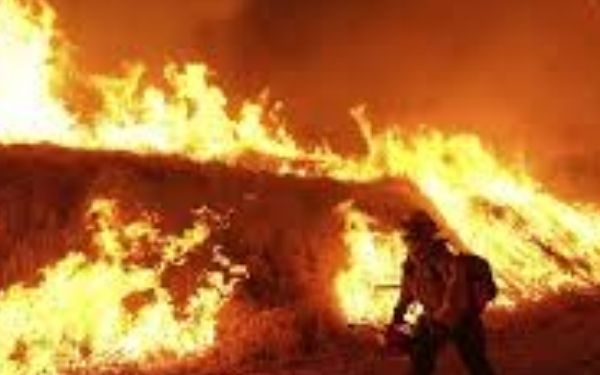Still recovering from January’s devastating wildfires—estimated to have caused up to $275 billion in damages—California is preparing for another intense summer fire season.
Summer is typically the worst for wildfires, and forecasters warn this year could be especially severe. As temperatures rise and dry air strips moisture from plants, the risk of fast-spreading fires climbs.
“This summer looks to be pretty high in the record books,” said UC climate scientist Daniel Swain. “That has serious implications for fire season.”
Signs of trouble are already here. Snow in the Sierra Nevada melted earlier than normal, cutting off a key moisture source. In Northern California, spring rains triggered a thick grass crop—now dried out and fueling early fires. Forecasters are warning that extreme heat will only make conditions worse.
One early blaze, the Inn Fire, scorched 728 acres in the Eastern Sierra foothills in May, climbing steep terrain unusually fast.
“That kind of fire in the Eastern Sierra worries me,” said Cal Fire Assistant Chief Tim Chavez. “Fires don’t usually climb like that. Once they hit slopes, they tend to go out.”
Cuts to federal fire-response agencies—including FEMA, the Forest Service, and the National Weather Service—are also a concern. Reduced resources will slow response times and limit firefighting capacity.
“That impacts our ability to respond to state fires,” Chavez said. “Aircraft and crews are always the first things to run out.”
Wade Crowfoot, California’s Secretary of Natural Resources, says these federal cuts will make the state less safe. He also pushed back on former President Trump’s past claims that poor state forest management caused wildfires.
“Fifty-seven percent of our forests are managed by the federal government,” Crowfoot said. “If anyone failed, it was the president.”
Wildfire damage varies year to year. In 2020, dry lightning sparked fires that burned over 4.3 million acres. But in 2022 and 2023, that number dropped to around 300,000 acres per year. On average, 1.4 million acres burn annually.
This year, the risks are high—and California is bracing for what could be a long, destructive summer.









